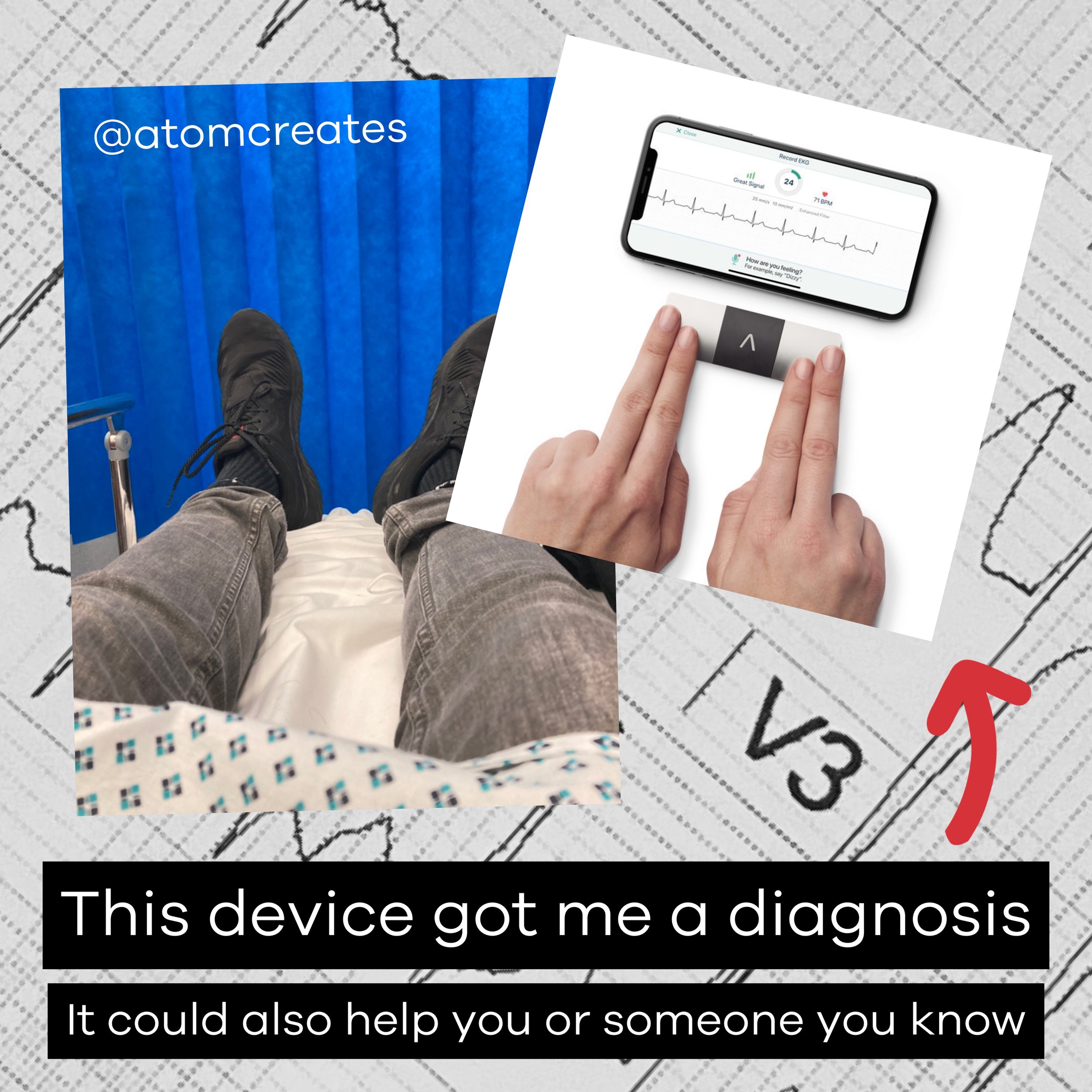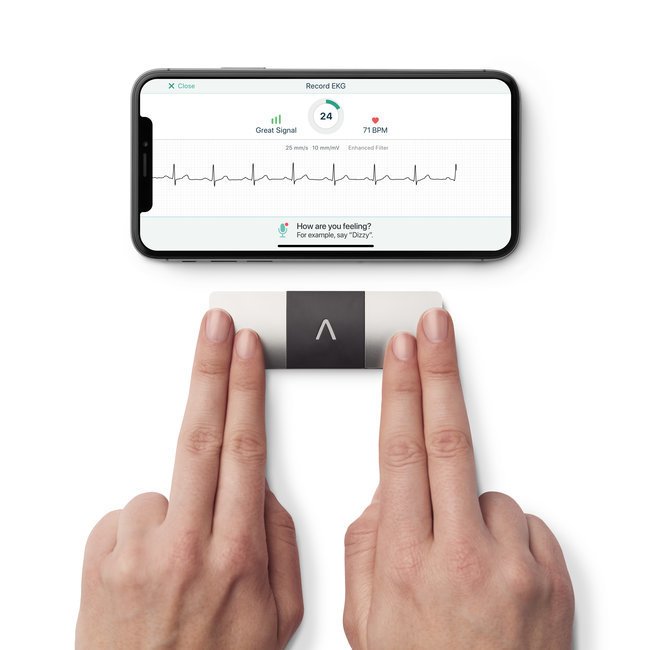Can’t be…beat
Recommending the AliveCor KardiaMobile 6L
This is a somewhat strange post to write.
Firstly, let me say what it is not.
This is not a paid promotion. It’s also NOT medical advice. I have NO medical qualifications whatsoever. Anyone reading this and who needs to get checked for any health issue should call their GP or go to your nearest hospital.
So, this is what it is…
It’s a recommendation based on real health experience. It’s simply me sharing, just in case it helps someone else.
Heart issues
Over the last few years, I can’t recall exactly how many, I’ve been experiencing significant issues with my heart rate and rhythm, and this has been on an increased basis.
My Wahoo smartwatch data will show my heart rate suddenly going very high, often staying there for hours at a time, and then suddenly returning to a normal rate. At times I feel very faint (but never pass out), and there can be a burning sensation in my neck muscles into the back of my head. It is a truly horrible feeling, and one which has become more concerning of late.
For those of you who have seen me at work, it’s probably been happening during these times, I’ve just been masking it. At times, over the years, I went to the GP and on a few occasions I wore the 24 hour ECG device to try and record this happening.
The problem with this approach is that if you do not catch the issue within that period, the free (i.e. non-insured) healthcare system offers very little (until my recent experience) in terms of any further investigation.
I tried hard within the options available to me to try and get to the bottom of the issue, in a mostly private way - diet, lifestyle, stress reduction, meditation, working on posture, carrying less photography equipment, and so on.
These are all things that need working on still, as is common for most people, but I now know that fundamentally it was something else.
Another surge
Last week I finished up a photoshoot on location and as I packed up my equipment, my heart rate surged. As usual there was no real reason. Everything had gone well and I had enjoyed it.
But this day was set to be different.
It was a Thursday, and two days earlier I’d taken receipt of a new AliveCor KardiaMobile 6L device.
Late in 2022 I decided to change GP to try and get to the bottom of my heart issue. My new GP mentioned the AliveCor KardiaMobile device - a mobile ECG device - and after pondering my options for a few (too many!) weeks, I spent the €170 and ordered one.
The device’s capabilities are simply incredible.
It is about a quarter the size of your smartphone and the one I bought can perform a single lead or a six lead ECG (for reference, the medical professionals use a 12 lead) by simply placing two fingers on either side and resting it on your bare knee or ankle. All the data is fed to an app on your smartphone. This can then be updated with notes and useful tags and shared as a pdf file.
The difference last week was that when my heart rate issue started, I was able to take the device out of my pocket, run the 30-second ECG, and document in incredible detail what my heart was up to (the scallywag).
I made several scans that day and it was during one particular test that I was able to record the dramatic change in my heart rate exactly as it was happening.
Seeking medical help
On the advice of a close friend who I was messaging about this, I then called the GP’s reception (it was 16:05) and requested an emergency appointment. They took my details, called me straight back, and brought me in.
I was given a full 12 lead ECG shortly after arriving, and they too were able to see the issue happening in real time. An ambulance was called.
The paramedics performed some procedures in an attempt to bring balance to my heart rate and rhythm. These were zero craic (one was a drug described as ‘Ctrl-Alt-Delete’ for the body, which I had twice) and these treatments each only worked momentarily before the issue continued.
It was off to hospital I went, blue lights and everything - an experience I can only describe as like being inside a torpedo.
The paramedics took constant readings and printed out ECG reports throughout the 35-minute journey, resulting in a significant pile of scrolls by the time we reached St. Vincent’s University Hospital! Crucially, at least one of the printouts captured the issue as it happened, and the staff in the emergency department took over.
Given the headlines around the health service at the moment, it’s worth stating in bright lights at this juncture that the staff I met - from the GP’s surgery, to the paramedics, and the emergency department, to the cardiac recovery ward - all were incredible. I can’t thank them enough.
I received medication via a catheter to calm the swinging heart rate and, after some time, it settled. I was quickly given a diagnosis of SVT (Supraventricular tachycardia) and, more specifically, a condition called SVT AVNRT (Atrioventricular nodal reentry tachycardia).
Basically, from what I understand (as someone who stopped studying science at secondary school, I should underline) is that the signalling in my heart gets locked in a cycle and finds it hard to break this, like a short circuit (Johnny 5 is alive 🤖).
Apparently I’ve always had this, it’s just become more regular and noticeable over time due to a variety of factors. (Interesting to think about events I’ve completed in the past, like the Dublin Marathon and the Killary Fjord 3.8km swim, in light of this news!)
Adrenaline also plays a part, which I believe explains why the issue affected me at times when I was actually happy or excited by something (that’s a lot of the time!). This has been puzzling for me because it wasn’t just a case of saying stress is bringing on the issue, and that being that - it was happening when I was doing the things I love as well.
Anyway…
I left hospital the following day with meds that balance the heart rate for the short term, and with an ablation procedure being the plan for the long-term.
From what I was told, and from the information I’ve read since, this is a procedure where the surgeon inserts a catheter/s via the veins into the heart and builds up scar tissue around the problem area/s to fix the signalling issue.
The success rate for this specific condition is extremely high and, all being well, the ticker will be tocking better than ever afterwards.
[I was back to work two days later, and only prevented from carrying on where I left off by a bout of the flu the week after this episode.]
So, as you can see, a few elements needed to come together here for this successful diagnosis. However, the key that unlocked it all was the KardiaMobile 6L device.
Highly recommended
If you or someone you know needs to be able to record heart data in a way that could lead to a useful medical diagnosis, then it is certainly an option worth exploring in my personal experience.


